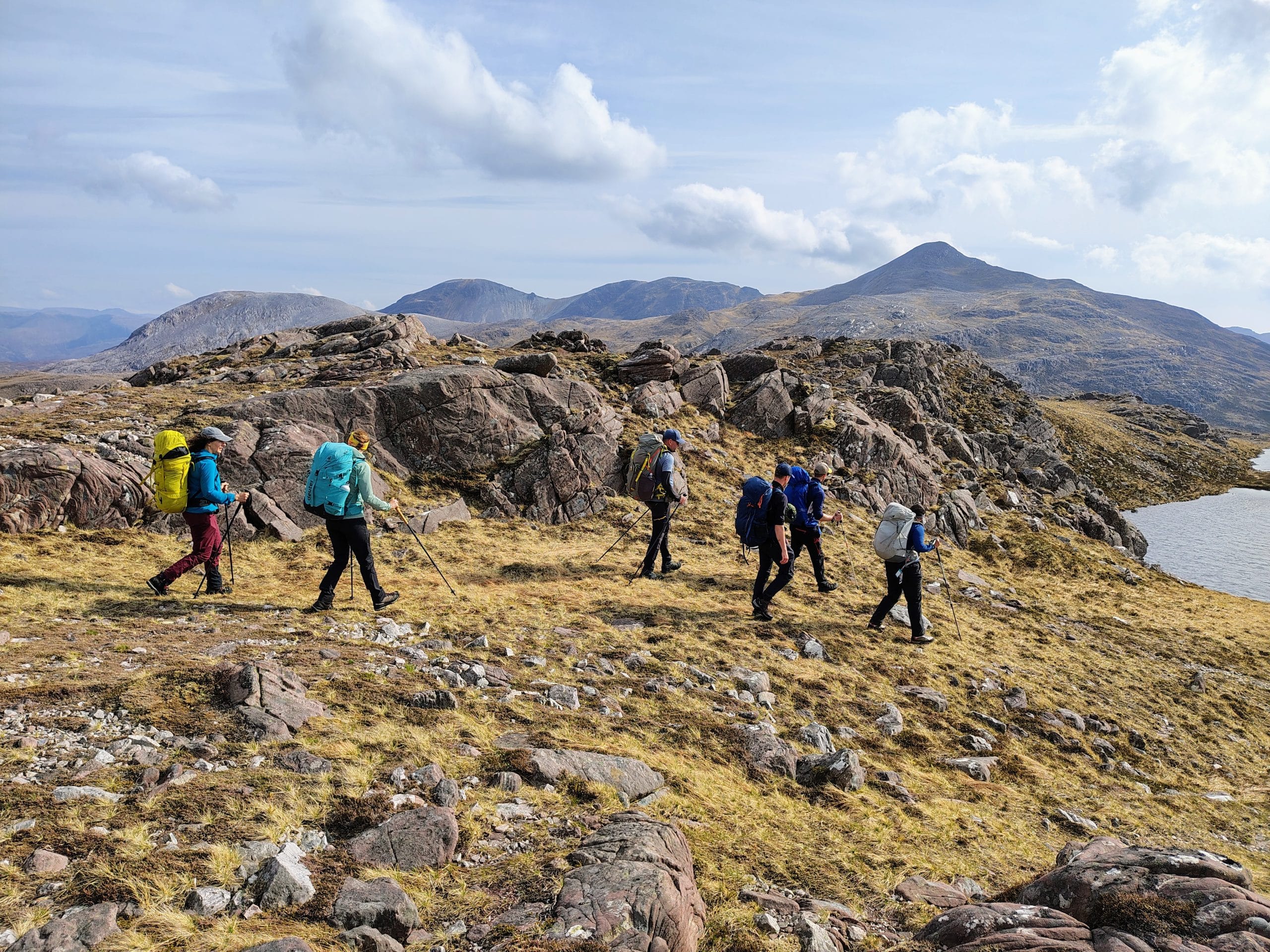
A group on a Mountain Leader Expedition

A group on a Mountain Leader Expedition
Are you aspiring to lead groups in the stunning UK mountains? The Mountain Leader (ML) Assessment is a significant step towards achieving that goal, validating your skills and knowledge for summer conditions. It provides all the background needed to feel confident while out with groups. Of course just like passing a driving test it’s the first step on the path to leading groups well and just like a driving test it can be really intimidating. Don’t worry though our guide is here to help you prepare properly for success and hopefully take away some of that worry about completing your Mountain Leader Assessment.
One of the best ways to understand all the elements that are looked at during the assessment is to be really familiar with the “Mountain Leader Skills Checklist”. This document covers all of the syllabus and has a handy guide to help you work out exactly how familiar you are with each area. You can find the checklist on our site at: https://www.climbtorridon.co.uk/resources/mountain-leader-skills-checklist.pdf
One of the core prerequisites for the ML assessment is accumulating a minimum of 40 Quality Mountain Days (QMDs) in three different UK or Ireland regions. A QMD is more than just a walk in the hills; it’s a day where you’ve actively engaged in leadership, navigation, and decision-making in challenging mountain environments. Remember different areas of The Highlands count as different mountain regions. You can find the official definition of a QMD here.
Navigation is arguably the most difficult skill for a Mountain Leader candidate on assessment. You’ll be expected to navigate accurately in all conditions, including poor visibility. That said, assessors will understand that anyone can make a mistake though, so don’t worry if you’re the type of person that nerves get the better of. You’ve five days to prove you can navigate accurately. Being competent will shine through.
Remember your assessor isn’t trying to catch you out. They want you to have opportunities to show how well you can navigate. Prepare well and you’ll enjoy navigating.
A Mountain Leader is responsible for the safety and well-being of their group. This involves more than just leading the way. These softer skills can feel harder to grasp but are really important to being an effective leader.
Key areas of the syllabus relating to hazards to think about are the emergency rope work and river crossing. Make sure you understand and can reproduce the techniques used as well as knowing when each technique would be appropriate. Ensure what you practice is the correct methods as practice makes permanent.
The 3-day wild camping expedition is a significant part of the assessment. You need to be self-sufficient and comfortable operating in a remote environment.
A current and valid 16-hour outdoor first aid certificate is a mandatory prerequisite. Ensure your certificate is up-to-date and that you are confident in your first aid skills. BASP runs great courses in Scotland.
The Mountain Leader assessment is physically demanding. You’ll be spending long days in the mountains, often carrying a heavy pack. Having enough fitness to be able to do all the walking will give you the capacity to really show what you’re capable of.
Remember that if you have a medical condition or other specific need then we’re allowed to make reasonable adjustments provided we can discuss it before the course so do get in touch if you’re worried about this.
It’s almost guaranteed that at some point during assessment, normally for most of it, you’ll be in unfamiliar terrain. Many candidates try to prepare by learning “common assessment areas” ; this inevitably leads to a stressful assessment when you’re asked to go somewhere unfamiliar and even with the skills to do so you don’t feel confident enough to apply them. A far better strategy to prepare for assessment is to visit as many new areas and new routes in familiar areas as you can. This way you’ll be used to being in new terrain, with different people, and have had to use all those skills – on assessment it’ll just feel normal to you. It also has the side effect of making a great logbook with lots of variety. Win, Win!
If you feel rusty in certain areas or it’s been a while since your training, consider attending a Mountain Leader refresher course or seeking guidance from an experienced Mountain Leader Course Provider. This can provide valuable feedback and boost your confidence and help identify any areas you need to work on.
The Mountain Leader Assessment is a challenging but incredibly rewarding experience. By thoroughly preparing, you’ll not only increase your chances of success but also become a more competent and confident mountain leader. It’s an enjoyable and rewarding process so go and have lots of fun!
Ready to book your assessment with Climb Torridon? Visit our course page to learn more about our Mountain Leader Assessment course in the Scottish Highlands.

Thank you for reading,
Ollie
Winter Mountaineering and Climbing Instructor (WMCI) and Lead Guide @ Climb Torridon